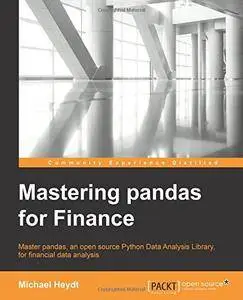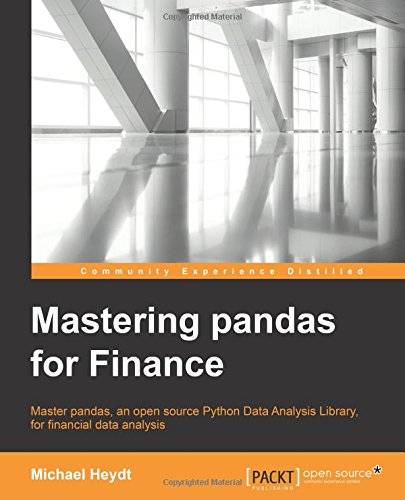English | 2015 | ISBN: 1783985100 | 259 Pages | PDF | 6.38 MB
Master pandas, an open source Python Data Analysis Library, for financial data analysis
About This Book
- A single source for learning how to use the features of pandas for financial and quantitative analysis.
- Explains many of the financial concepts including market risk, options valuation, futures calculation, and algorithmic trading strategies.
- Step-by-step demonstration with interactive and incremental examples to apply pandas to finance
Who This Book Is For
If you are interested in quantitative finance, financial modeling, and trading, or simply want to learn how Python and pandas can be applied to finance, then this book is ideal for you. Some knowledge of Python and pandas is assumed. Interest in financial concepts is helpful, but no prior knowledge is expected.
What You Will Learn
- Modeling and manipulating financial data using the pandas DataFrame
- Indexing, grouping, and calculating statistical results on financial information
- Time-series modeling, frequency conversion, and deriving results on fixed and moving windows
- Calculating cumulative returns and performing correlations with index and social data
- Algorithmic trading and backtesting using momentum and mean reversion strategies
- Option pricing and calculation of Value at Risk
- Modeling and optimization of financial portfolios
In Detail
This book will teach you to use Python and the Python Data Analysis Library (pandas) to solve real-world financial problems.
Starting with a focus on pandas data structures, you will learn to load and manipulate time-series financial data and then calculate common financial measures, leading into more advanced derivations using fixed- and moving-windows. This leads into correlating time-series data to both index and social data to build simple trading algorithms. From there, you will learn about more complex trading algorithms and implement them using open source back-testing tools. Then, you will examine the calculation of the value of options and Value at Risk. This then leads into the modeling of portfolios and calculation of optimal portfolios based upon risk. All concepts will be demonstrated continuously through progressive examples using interactive Python and IPython Notebook.
By the end of the book, you will be familiar with applying pandas to many financial problems, giving you the knowledge needed to leverage pandas in the real world of finance.



